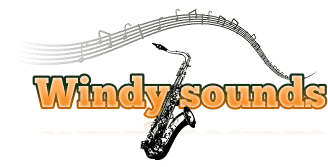The harmonica is one of those instruments that’s a joy to play. It’s small, fits easily in your shirt pocket or backpack and is relatively easy to learn. It doesn’t matter what type of music you love either.
Learning the harmonica allows you to jump on stage and complement other players in a jazz, folk, rock, blues or country band.
Don’t forget the importance of understanding the inner workings of any instrument you learn how to play. You should ask, how does a harmonica work, while discovering the best playing technique. Ready to get started? Let’s dive in!
What is a Harmonica?

A harmonica can also be called a mouth organ. It’s considered to be a wind instrument.
When you want to know how a harmonica is made, it’s important to know that the inside of a harmonica consists of metal reeds that connect to a row of holes.
In order to play the instrument, you simply position your mouth over the row of holes and inhale and exhale to produce specific musical notes.
Most harmonica players decide to use what’s called a diatonic harmonica, which comes in various keys. Some of these keys include A, C, F# and B. It’s common to get started on a C diatonic harmonica.
How do You Play the Harmonica?
Take the time to learn how to play the harmonica correctly so you don’t end up practicing bad habits that result in squeaky and airy sounds. This results in:
- The inability to play songs accurately
- Frustration
- Discouraging results when attempting to bend notes
You’ll benefit from soulful and rich sounds if you learn the proper technique. One good method is using a deep and relaxed approach to your harmonica playing. Avoid tongue-blocking or tight puckering at the beginning of your playing journey. This will make it easier to bend notes as you become more advanced.
Why do you want to become good at bending? The reason is you’ll get good at creating the wailing, crying and soul-melting sounds we all expect harmonica players to produce.
Some teachers teach the tight puckering technique to beginners because it helps get things off to a quick start.
Unfortunately, you’ll need to re-learn better methods later on. Here is the best way to start learning the harmonica.
Position the harmonica so the numbers face up as you hold it in your right hand. This means the lower notes will be to your left. Hold the instrument deep inside your mouth with relaxed and moistened lips.
Angle the harmonica so the back-side moves up toward the ceiling. Rotating it in this position is vital for learning proper technique. Use a mirror if you need to. Make sure your upper lip is positioned deep over the upper harmonica reeds.
Next, unfold the lower lip so your inner lower lip area is making contact with the harmonica. In the beginning, you might need to pull your lower lip down with your fingers in order to get the positioning correct.
Here’s what you want to see if you look in a mirror:
- Cover most of the harmonica with your upper lip
- Make sure your lower lip is in the shallow position
- Make contact with the instrument via your inner lower lip area
- Angle the harmonica so the back-side is pointing to the ceiling (with the instrument angling down into your lower lip)
Whether you’re playing a 10 hole harmonica or a 5 hole harmonica, you now have everything in place to begin playing.
All harmonicas are organized the same. If you’re playing a C-harp, for example, your home note is C. It’s the blow note (as you exhale) in hole #4. The next note (D in this case) is the draw note (as you inhale) in the same hole.
How much does a Harmonica cost?
A quality 10-hole diatonic harmonica for beginners will typically run you anywhere between $30 and $100. A chromatic harmonica is a bit more expensive, coming in at somewhere between $125 and $250.
You can find harmonicas that cost more, but it’s not necessary to spend more in order to find an instrument that sounds that much better.
Becoming an excellent player is what you need to focus on if you want to sound great.
Wondering what the best harmonica for beginners is? Here are some good options to consider:
- Fender Blues Deluxe C
- Hohner Special 20 C
- Swan Mini C
- Hohner Marine Band C
- Mippy Diatonic Blues
- Hammond HA-20-C
How to Repair a Harmonica Reed
Take off the cover plate that applies to the reed you’re repairing. Remove the bottom plate if you need to fix a draw note or the top plate if the blow note is the problem. You might need a small screwdriver to remove a harp that’s secured with screws.
Once you have the lid removed, look for any corrosion or gunk. Use a small screwdriver or toothpick to clean anything that’s clogging up your instrument. Be sure to avoid scratching the reeds.
Often, what you think is a broken reed is one that’s simply in need of cleaning. Or, you might need to bend it slightly into the plate if it’s a draw note or away from the plate if it’s a blow note.
You’ve been wondering, how does a harmonica work? You now know the answer. The next step in your journey is investigating which type of harmonica and which model best fits your needs.
Take your time with this decision. There’s no need to rush the process. It’s common to feel a little apprehension or worry that you might make a mistake. However, this is one instrument that doesn’t cost much. Do your research, make your selection and then start learning how to play your new harmonica.
